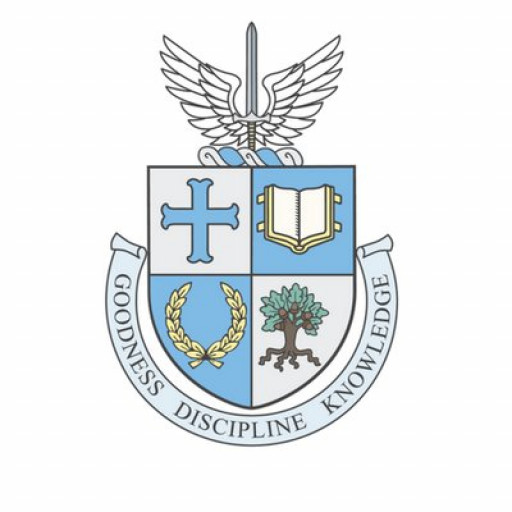Photos of university
Intermedia and Cyberarts is a dynamic and innovative undergraduate program offered at Concordia University that explores the creative and technological intersections of digital media, art, and communication. This program is designed for students who are passionate about the evolving landscape of multimedia art, digital design, interactive media, and cyberarts. Throughout the curriculum, students develop a comprehensive understanding of both the artistic and technical aspects of digital media production, including visual storytelling, programming, animation, sound design, and interactive installation. The program emphasizes hands-on learning, encouraging students to experiment with emerging technologies such as virtual reality, augmented reality, and digital fabrication. Intermedia and Cyberarts fosters a creative environment where students can push boundaries, challenge conventions, and produce innovative projects that address contemporary cultural and technological issues. The program also integrates critical thinking and theoretical foundations, ensuring students can analyze digital media's impact on society and culture. Graduates from the program are prepared for careers in digital art, interactive media design, multimedia production, digital consulting, and research. They are equipped with skills in project development, multimedia authoring, programming languages, and digital aesthetics, enabling them to thrive in a rapidly changing digital economy. The program benefits from Concordia's vibrant arts and media community, access to advanced laboratories, studios, and equipment, and collaboration opportunities with industry professionals and researchers. Whether students aim to become digital artists, media producers, or innovators in new media technologies, Intermedia and Cyberarts provides the knowledge, skills, and creative environment necessary to succeed in the digital age.
The Intermedia and Cyberarts programs at Concordia University offer a dynamic and comprehensive education in the fields of digital arts, multimedia, and interactive media. These programs are designed to equip students with the artistic, technical, and theoretical skills necessary to thrive in the rapidly evolving digital landscape. Students will explore a diverse range of disciplines, including visual arts, sound design, video production, coding, and user experience design, fostering a multidisciplinary approach to creative practice.
Throughout the program, students engage in experiential learning through hands-on projects, workshops, and collaborations with industry partners. They gain proficiency in various software tools and programming languages essential for creating interactive installations, digital art pieces, and cyberarts projects. The curriculum emphasizes both the conceptual and technical aspects of digital media, encouraging students to develop innovative approaches and critical perspectives on the role of technology in contemporary art and culture.
In addition to technical training, the program emphasizes the development of an individual artistic voice and an understanding of historical and theoretical contexts related to media arts. Students are encouraged to experiment with new media, push the boundaries of digital art, and explore emerging trends such as virtual reality, augmented reality, and artificial intelligence. The program also prepares students for careers in media arts, digital content creation, game design, multimedia production, and cyberculture research.
Graduates from the Intermedia and Cyberarts programs leave with a robust portfolio of works, a deep understanding of the digital arts landscape, and the skills required to innovate in various professional settings. Whether aiming to become a media artist, digital designer, or researcher, students will find the program provides the necessary foundation and a stimulating environment for creative growth. Concordia University’s focus on interdisciplinary collaboration, combined with state-of-the-art facilities, ensures students are well-prepared to contribute to and shape the future of digital arts and media.
The Bachelor of Fine Arts (BFA) in Intermedia and Cyberarts at Concordia University requires students to complete a comprehensive curriculum that combines theoretical knowledge with practical skills in digital media, interactive art, and cybernetic arts. Students must fulfill a set of core courses designed to provide foundational understanding of computer programming, digital imaging, sound design, and multimedia production. In addition to these foundational courses, students are encouraged to engage in specialized electives that explore emerging fields such as virtual reality, augmented reality, internet art, and immersive environments.
To advance in the program, students are typically required to participate in studio work, collaborative projects, and exhibitions that demonstrate their ability to produce innovative digital artworks. The program emphasizes interdisciplinary collaboration, encouraging students to work across fields such as fine arts, computer science, and media studies. Students must also complete a series of seminars and workshops focused on contemporary theory, the history of media arts, and ethical considerations in digital creativity.
Academic progression is assessed through a combination of coursework, projects, presentations, and a culminating thesis or capstone project that showcases their technical proficiency and artistic vision. Some courses may involve practical internships or industry collaborations to facilitate real-world experience. Overall, the program aims to prepare graduates for careers in digital arts, interactive media production, multimedia design, and related fields, equipping them with both creative and technical competencies necessary to innovate in the rapidly evolving digital landscape.
The financing studies for the Intermedia and Cyberarts programs at Concordia University include a variety of funding options for both domestic and international students. Students are encouraged to explore scholarships, bursaries, and assistantships offered by the university, which aim to support students financially throughout their studies. Concordia University provides merit-based scholarships based on academic achievement, which are awarded automatically upon admission or through separate applications. Additionally, there are major awards and external funding sources that students can apply for, including government-sponsored programs such as provincial and federal grants. Work-study opportunities are available for eligible students, allowing them to earn income while gaining professional experience in their field. Student loans are also accessible for eligible students through government programs, which can help cover tuition fees and living expenses. The university's financial aid office offers comprehensive guidance and support for students seeking funding options, including planning for educational costs and understanding the application processes. International students are encouraged to seek external scholarships specific to their home country or international programs, and some funding options may require separate applications. Concordia University also promotes financial literacy and planning workshops to assist students in managing their finances effectively. The cost of tuition varies depending on the program and the student status (domestic or international), and students are advised to consult the university’s official website for the most current fee structure. Overall, the university’s holistic approach to financing aims to reduce financial barriers for students pursuing interdisciplinary studies in Intermedia and Cyberarts, ensuring access to quality education while providing support through various funding sources and financial aid programs.
Intermedia and Cyberarts at Concordia University is a dynamic interdisciplinary program that explores the intersection of art, technology, and media. This program is designed for students passionate about digital arts, new media, and creative technologies, providing them with a comprehensive education that combines theoretical knowledge and practical skills. The curriculum emphasizes experimentation with digital tools, interactive media, virtual reality, augmented reality, sound, video, and innovative installation practices. Students are encouraged to develop their own artistic voice while engaging with emerging technological trends. The program fosters an environment of innovation and critical thinking, often collaborating with industry partners, artists, and researchers to create cutting-edge projects. Students have access to state-of-the-art facilities, including specialized labs for digital media production, immersive media environments, and multimedia studios. The interdisciplinary nature of the program allows students to work across various media and integrate different artistic disciplines, preparing them for careers in digital arts, new media design, interactive installations, and media production. Graduates of Intermedia and Cyberarts have gone on to work in galleries, museums, media companies, and as independent artists, pushing boundaries in digital creativity. The program also emphasizes the development of a professional digital portfolio and encourages students to participate in exhibitions, festivals, and collaborative projects during their studies. Overall, this program aims to cultivate innovative media artists who can critically and creatively navigate the rapidly evolving digital landscape.


